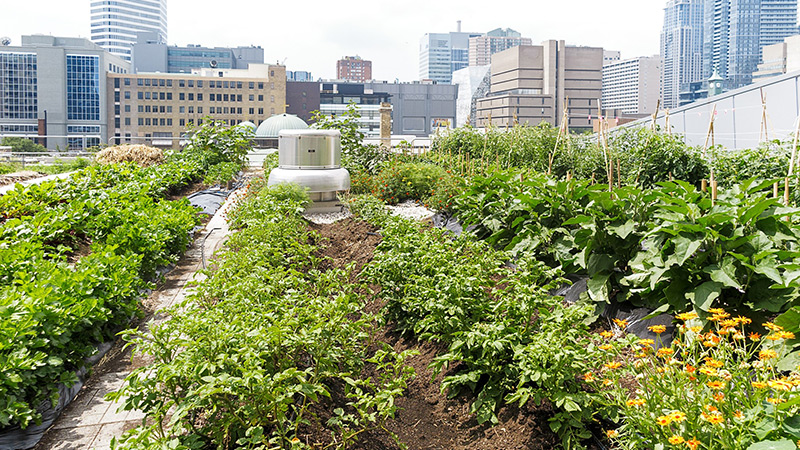Hemp Agronomist, IPM Expert Talk Farmer Tips During Virtual Event
Imperial Seedlings hosted its American Hemp Farming Expo 2020 event last week, kicking off the 2020 cannabis industry live event season with what promises to be the first of many virtual event presentations for industry participants in the post-COVID-19 professional networking world.
I found time between helping the team virtually get our June issue of Greenhouse Grower magazine out the door to attend a few of the presentations. One that I really enjoyed was Kyle Truesdell’s “Hemp Agronomy 101” talk.
Nationwide Hemp Agronomist Network Detailed
In my previous tenure as a Field Editor within our row crop ag media segment at Meister Media Worldwide, I had near-weekly interactions with agronomists from all over the country . During that time, I acquired a healthy respect for these crop performance-focused professionals, many of whom are some of the sharpest, most organized, and results-driven individuals I’ve ever come across.
Since making the jump over to our specialty ag side and taking up legal cannabis and hemp content as a personal crusade of sorts, I’ve yet to have the same level of interaction with cannabis-focused agronomy professionals. I know they’re out there, helping growers produce these magnificent, trichome covered beauties at commercial scale, but I suppose I’ve yet to make the necessary connections in that universe…
During the Expo, I had the chance to learn about Agrarian Supply’s (Healdsburg, CA) nationwide network of legal cannabis and hemp agronomy consultants. The group’s co-founder and co-CEO, Kyle Truesdell, gave a presentation on some of the basic principles of hemp agronomy.
During his talk, Truesdell argued that hemp farmers themselves must be a sort of all-encompassing agronomist. With limited options for mechanization and automation – especially in hemp farming – that’s just the reality with how the crop is being produced today.
He also made a few other notable points for growers during his presentation:
Understanding your soil (if field grown) and water analyses is extremely important, especially during the grow site selection process. Having a multi-faceted water testing program in place, where testing occurs prior to each major production event in the plant’s life cycle (e.g., before pre-plant fertilizer application, before in-season fertilizer applications) and then matching that data to leaf/tissue analyses is extremely vital for greenhouse growers of the crop.
Integrated Pest Management (IPM) implementation is one area where many large growers can benefit from bringing in a professional agronomist to help right-size local scouting programs and reporting and helping standardize the process by which your team notes in-crop observations. “Knowing the plant growth stages and what problems typically need to be solved in each stage, that is where an agronomist can come in and make some observations, look at your data, and make some educated agronomic recommendations that will really make a difference,” Truesdell said.
Whatever problems in a cannabis/hemp grow that you uncover, you’re going to be limited in your options on how to treat or overcome it, at least compared to other segments of agriculture that allow much more crop protection chemical deployment. “You’re going to be farming this crop organically, and biological products are absolutely key and crucial in hemp and cannabis,” Truesdell said. “Some of these biological products are, in my opinion, absolutely amazing products. Especially in marginal soil or water situations, it really helps the plant and brings some synergies to your grow.”
And lastly, being successful at commercial scale hemp and cannabis farming is simply, at its most fundamental level, an episodic quest to minimize abiotic stress events that hurt the plant, according to Truesdell. “A professionally trained agronomist knows how to identify when those events occur, whether it’s during transplanting in the greenhouse, direct seeding, germination period, or even between vege and flower, and then can help you push that plant at the end of its cycle to produce those high levels of cannabinoids that bring value,” he said. “The goal is giving those plants what they need to overcome stress as much as possible. It’s a combination of IPM and plant nutrition principles.”
IPM Pointers Straight from the Source
The other presentation I found time to sit in on was Greg Estes’ enlightening beneficial insects breakdown, which I freely admit is a subject matter I resolve to learn more about going forward, because it sounded like an awful lot of “inside baseball” even with Estes doing a great job explaining the science.
Estes, an IPM consultant with Koppert Biological Sciences in the Pacific Northwest, talked about how beneficial insects are being deployed in advanced IPM applications, in conjunction with both conventional (in crops that allow it) and organic crop protection chemistries.
However, in cannabis and hemp, there’s not many options out there other than biologicals.
The good news, though, is that Koppert has several options for cannabis and hemp growers dealing with pest outbreaks,from predatory mites that hunt thrips, whiteflies, and their larvae, to specialist “Spidex” spiders that only go after two-spotted mite. These remarkable little spiders (personal note: always been fascinated by our eight-legged friends) are tear shaped as well, so scouts can tell them apart from their unwanted foes.
Estes also added that he “couldn’t stress enough” the importance of robust scouting and crop monitoring SOPs, indicating sticky cards and tapes, the Nanutec Scout mobile app technology, and a good, old fashioned 20x hand lens as essential tools for the job.
And, from what I heard during the talk, cannabis aphid is a pest that many growers are having a tough time with of late. Estes had thoughts there, as well.
“We’re throwing the kitchen sink at cannabis aphid, which currently means Aphidius colemani in conjunction with green lace wing larvae. But again, it comes back to our R&D at Koppert and that’s where our focus is right now; we’re doing a ton of work on this specific aphid,” he explained. “However, the work is still ongoing, and we don’t want to jump to conclusions and give any bad advice; but I am hoping we’ll soon have some news on that for cannabis growers.”










